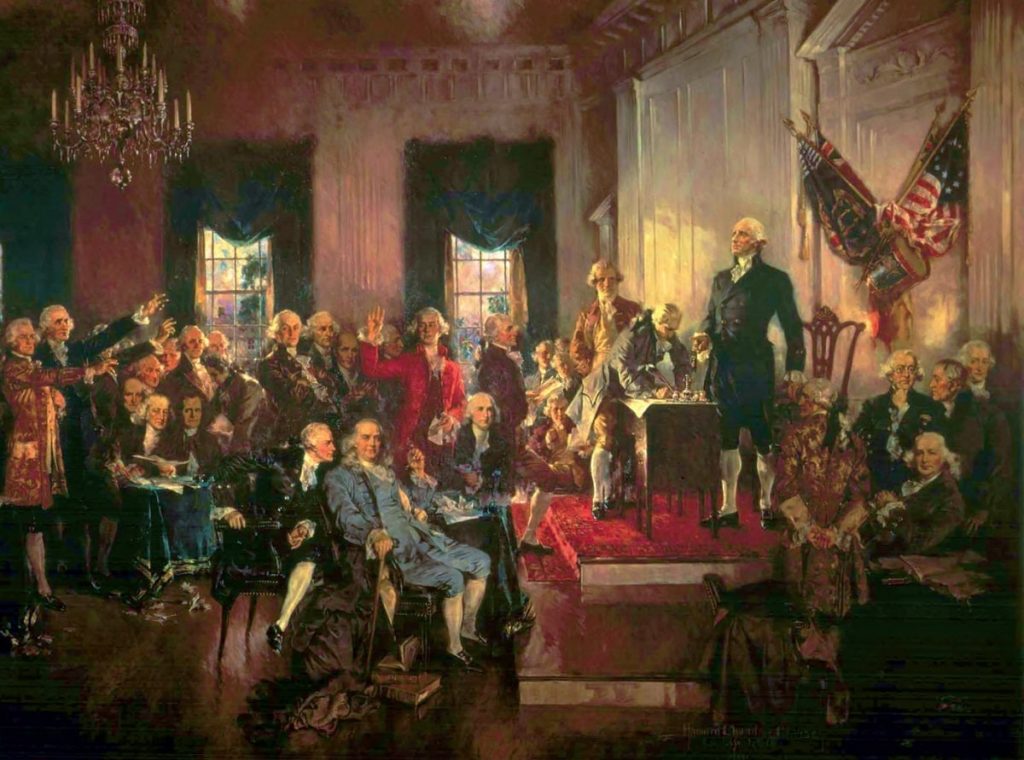
On August 18, the Sunday New York Times included a section, The 1619 Project. It announced a goal unusual in journalism, reframing American history, “making explicit how slavery is the foundation on which this country is built.”
The Times seemed to imagine that all the protestors were far-right conservatives, but one that caught our eye was a piece on Reason by Timothy Sandefur. He credited The Times with producing some fine articles but took them to task for including a persistently off-key theme: That slavery “is the country’s very origin,” that slavery is the source of “nearly everything that has truly made America exceptional” and in the words of one of The Times writers, the founder “used racist ideology” at the nation’s founding.
For one thing, Sandefur says, the idea that the white men who wrote the Declaration of Independence did not believe its words applied to black people is simply false. John Adams, James Madison, George Washington, Thomas Jefferson, and others said at the time that the doctrine of equality rendered slavery anathema. Jefferson also wrote that he considered blacks inferior to whites, but he thought that was irrelevant to the question of slavery’s morality. “Whatever be their degree of talent,” Jefferson wrote, “is not measure of their rights.”
Since the Times sets the agenda for so much of the media, the publication’s ahistorical reporting will rattle through the culture for months and probably years to come. Children will have a skewed view of American history, which will be difficult to reconcile with the scholarly work of historians.
At a time when huge openings for blacks and minorities are evident, the Times wants to once again reinforce the victim status of these groups as oppressed minorities. the Times is not the only institution pushing minority oppression and white privilege as an ongoing societal truth. Public schools are now introducing required classes in “ethnic studies” for grade K-12 that reinforce the focus on oppression.
Of course, where’s there’s oppression, there are villains. In this case, white people with “white privilege.” What the Times is really saying is that the game is still really fixed against black people. From a black point of view, it’s not just “look what they did to us”; it’s “here’s what they’re doing to us.”
The times reporting on this subject brings to mind how Dorris Goodwin did her interviews with LBJ for her version of his biography. While being a bed partner.
John Adams wrote the Massachusetts Constitution of 1780 (still in effect) and his language about equality was interpreted to preclude slavery — see: https://www.mass.gov/guides/massachusetts-constitution-and-the-abolition-of-slavery
This is documented in three decisions of the Massachusetts Supreme Judicial Court* issued between 1781 & 1783 that anyone who wants to can read. To say that John Adams supported slavery is a deliberate lie, and the people promulgating it need to be called on it.
* The Commonwealth’s legislature is called the “General Court”, hence the SJC title, and MA, PA, VA, & TN are Commonwealths instead of States.
I should add that the Committees for Public Safety had freed an unknown number of slaves a decade earlier. Only about a third of the people supported the Patriot cause, and a full third remained loyal to the British side. The local Committee for Public Safety would confiscate the property of those not considered properly supportive of the Patriot cause — except, in the case of slaves, if they fought in the Revolution, they were free afterwards. This led to Black communities not just in Boston but throughout New England, segregated pockets in larger communities and relatively prosperous.
It’s not just that WEB DeBois went to Harvard in 1888, but that he got there. He was from Great Barrington, on the NY border and even today three hours from Boston (i.e. Cambridge). The Hoosac Tunnel, which enabled an East/West railroad, had only opened in 1875…
No one ever mentions this, but the first chapter of his Souls of Black Folk explicitly states that while he hadn’t experienced racism as a child, he’d seen it directed at others (European immigrants). This is never mentioned…